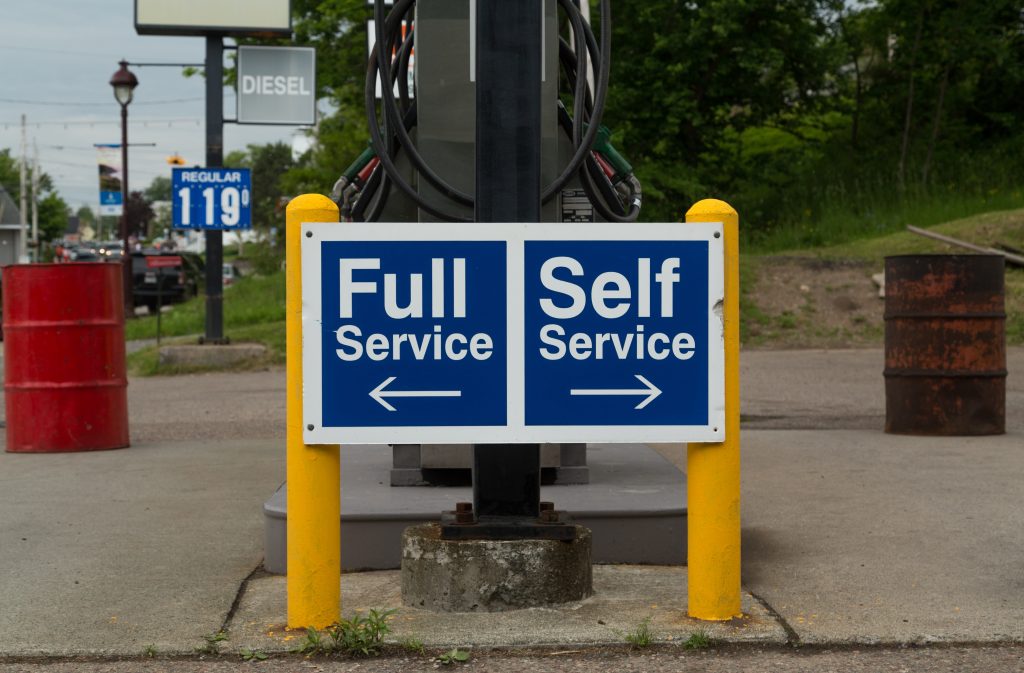1:35 pm
Being Attentive With Unattended Self Service Outlets: How To Build For Remote Monitoring

Why it makes sense to plan for a Remotely Monitored Self Service Outlets at the time of your build.
Recently, CTM has worked on several design projects involving Unattended Self Service Outlets (also known as Remotely Monitored Retail Sites).
It is a relatively new business model that allows an owner to run a gas bar without the need for onsite staff. Currently, Alberta and Ontario are the only provinces to permit these types of operations.
We have seen growing interest in this approach. Several owners are opting to build sites that will serve exclusively as unattended operations. Many more plan to have an attendant on duty throughout the day, but want the flexibility to offer a remotely monitored solution at night.
How do Remotely Monitored Retail Sites work?
Sites are equipped with two-way communication systems with continuous video monitoring capabilities. Instead of an onsite attendant, the station is supervised by an employee or owner who is working at home, at an office or even at another service station. Third-party monitoring services may also be available.
The customer simply prepays using a credit card, debit card, gift card or account card. The pump is then activated by the remote attendant. Should the customer have a problem, he or she can communicate using the two-way monitoring system. To protect against fire and other concerns, additional safety systems are in place.
In Ontario, one person can monitor up to 48 dispensing positions! Just think of the savings on staffing.
What are the benefits of an Unattended Self Service Outlet?
- Asset Optimization: It gives you another option for operating a facility and getting the most from your assets. You can extend your hours of operation – resulting in a competitive advantage. This model is ideally suited to remote locations and sites with a steady flow of late evening traffic.
- Manpower Savings: You can eliminate (or reduce) the costs associated with onsite attendants.
- Employee Safety: With remote monitoring, there is no need to worry about employee safety during evening hours and in remote locations.
What is required to set up a Remotely Monitored Retail Site?
It is relatively easy to design your gas station for remote monitoring, and it can be achieved with minimal added expense during the construction phase – as most of the wiring and conduits are built into the canopy.
For the most part, the code is similar to a standard setup, with a few added requirements:
- Two-way communication systems with real-time video surveillance (high speed internet connection required).
- Remote monitoring equipment at an offsite location.
- Standard dispensers with an emergency stop, and optional equipment that may include an intrusion alarm and/ or an automated fire suppression system.
- Additional safety signage (including information on emergency contact numbers).
- Direct communication from the pump to the local fire department (Alberta).
Whether or not they have immediate plans to use remote monitoring, many owners are including these systems as part of a Build It Now package. This gives them the option of moving to an Unattended Self Service model at any point in the future. Retrofitting an existing station to include the required monitoring and safety systems is significantly more expensive than building everything in at the outset.
What about revenue from snacks?
A large part of gas bar revenue comes from the sale of snacks. It can also part of your “convenience” offering.
When we designed a full-time Unattended Self Service Outlet for Esso in Calgary, we included an enclosure that contains several vending machines. This allows customers to grab a soft drink, chocolate bar or chips for their drive.
Monitoring future needs and opportunities.
When you plan for your next gas bar, give serious consideration to making your outlet remote surveillance ready. Whether you use it or not, you will have the flexibility to introduce it at any time. The CTM Design team can walk you through the process and determine if this option is worth considering in your market.
